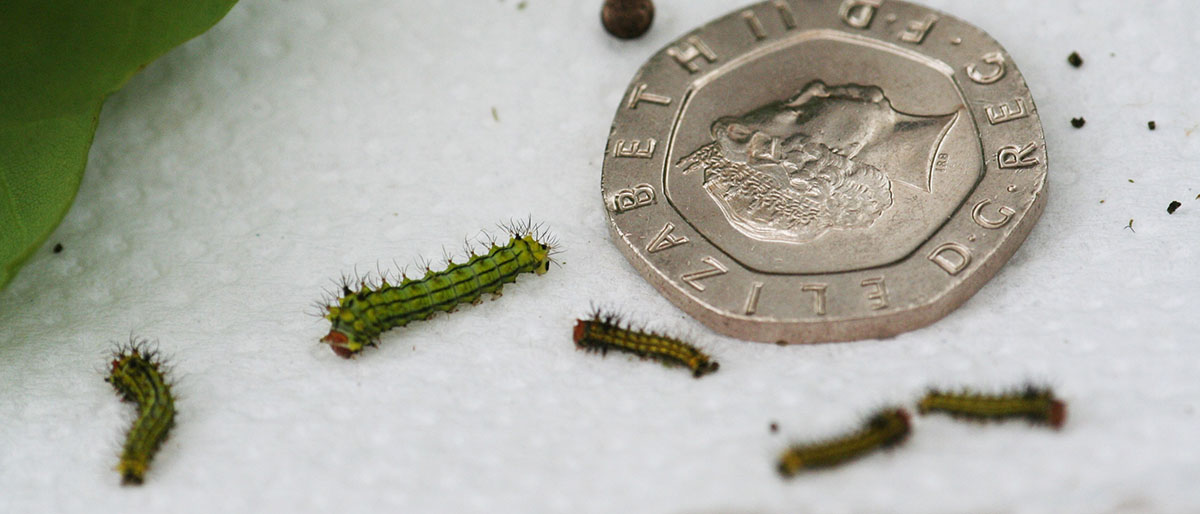The Lifecyle of a Silk Worm from Caterpillar to Moth
I have long been fascinated by these extraordinary creatures that hatch from an egg the size of a pinhead, start their life as a caterpillar about the size of the lower case “i” on your keyboard, grow to huge fat chaps the size of my index finger, spin themselves a cocoon in which to metamorphasise, emerge as a moth, mate and lay eggs for the next generation and then die. After keeping silkworms for many years, the magic of the process is as awe inspiring to me as I watch it as it was the first occasion I was privileged to witness it.
 Egg, newly hatched and second instar (after fist skin shedding) Japanese Silk Moth caterpillars Egg, newly hatched and second instar (after fist skin shedding) Japanese Silk Moth caterpillars |
 Silk Moth Caterpillar and Shed Skin |
Silk Spinning
I am interested in spinning silk, not reeling it, so my moths are able to live their natural lifespan. If I wanted to reel the silk thread from the cocoon, I would have to use the cocoon before the moth had emerged and chewed its way out of the cocoon: reeling requires the single thread the caterpillar has spun to be unwound intact.
I do rear a few bombyx mori, the cultivated silkworm that produces high quality silk, but my favourites are the wild silkmoth varieties. The silk may not be as high quality but the caterpillars are livelier, nicer to look at and the moths are stunning.

Silk Moth Caterpillar Nearly Full Grown
A close look at the cocoon will show that that it has an opening at the top through which the moth has emerged. To spin the silk, I will remove the protective gum the caterpillar excretes with the silk to harden it, by boiling in a solution of soap flakes with a little washing soda added. Then I stretch the softened cocoon over a former (a plastic pudding basin) and build up the layers of cocoons until I have a silk cap. When the cap is dry I remove it from the former, usually dye it, then spin a thread.
 Silk Moth Caterpillar Spinning a Cocoon |
 Close-up of a Silk Moth Cocoon |
This is a very basic account of the silkworm’s life cycle.
Courses and Talks
I offer talks on small-scale sericulture to interested groups. For spinners, I offer talks, courses and workshops on the various types of silk fibre commercially available, how these fibres have come to be as they are (often by-products of the commercial silk industry), and how to use them.

Silk Moths
For all you need to know about silkworm rearing there is an absolutely superb site www.wormspit.com operated by Michael Cook, silkworm expert and gifted silk weaver.

